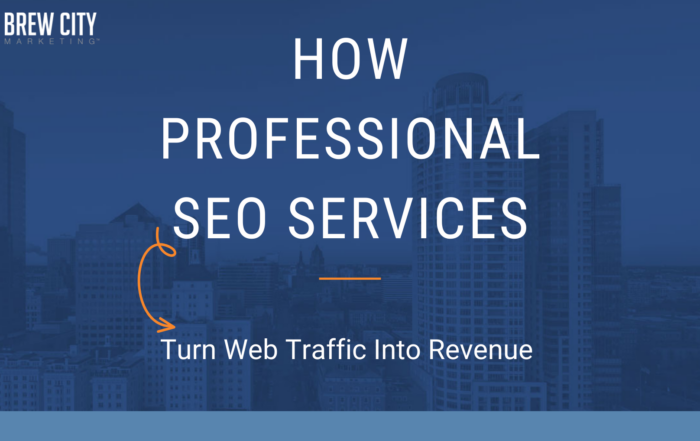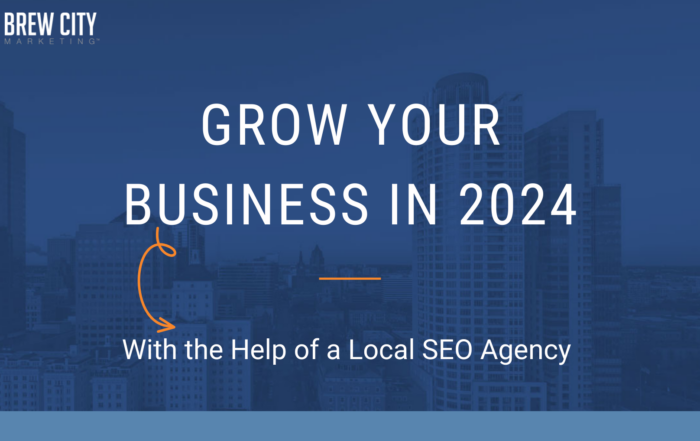I’ve met plenty of small business owners that consider social media marketing an unproductive use of their time. Meaning there are plenty of companies out there still not participating in social media.
In this blog post, we’ll describe five ways social media is working for small business owners that recognize the vital role it plays in marketing.
Recruiting Top Talent In A Tight Market
A great company can’t function without great employees. Small businesses face the same problem large companies do: finding and keeping talented employees. In September 2019, the unemployment rate reached a 10-year low, making it harder for employers of all sizes to compete for skilled job candidates.
Good candidates consider screening a two-way street. Job candidates are scrutinizing the prospective employer just as much as the employer is scrutinizing them. They seek unbiased reassurance that company values and culture align with their expectations.
An empty news feed on a company’s social media channel tells potential candidates the company has nothing interesting to say. This also portrays that the company doesn’t care about communicating with the outside world. Worst of all, it tells them the company doesn’t have any tech-savvy. These factors lessen the company’s competitiveness in attracting strong candidates.
Count on social media marketing to show off your company’s outstanding culture and company values. Post the great things your employees are doing, from company events to volunteer activities. Want to demonstrate how your Mission Statement is alive and well? Show folks how on social media.
Overcoming Reluctance to Use Social Media Marketing
I had a client that was reluctant to use social media. They custom-build highly technical, engineered control systems in the industrial space. After some reticence, we posted company team-building events, pot luck gatherings, Halloween costume contests, and blog posts written by the company president about his business philosophy and company values. It paid off. He was sold on social media after hearing a desirable job candidate tell him how impressed she was with their Facebook page!
Social platforms are also a great place to advertise your company’s job openings. According to research by Betterteam, 70% of hiring managers say they’ve successfully hired with social media. Also, according to Career Arc, 91% of employers are using social media to recruit talent today. In a harsh recruiting environment, it doesn’t pay to be in the 9% not using it!
Getting The Word Out About Selected Causes
Employees tend to respect companies and leaders that give to non-profit organizations, promote volunteerism, or support causes that align with their values.
Events are perfect for social media. Moreover, since most fundraising is event-oriented, it’s a great way to get the word out. That includes events like organized walks or runs, silent or live auctions, and blood drives.
I admire campaigns that tie in a simple visual. For example, the Red Nose campaign conducted by Walgreens raised more than $18 million. According to the website, doublethedonation.com, “The six-week campaign starts with Walgreens customers purchasing red noses and wearing them for group pictures and other Red Nose Day fundraising events. The proceeds from the red nose sales and additional fundraising events orchestrated by companies and individuals during the campaign will go towards helping lift children out of poverty in the United States.”
You don’t have to be a large corporation like Walgreens. Does your company give back to the community in some way? It’s a practice that benefits both parties, and social media is perfect for promoting it.
Engaging Employees As Brand Ambassadors Via LinkedIn
Sometimes the best social audience for a company is its employees. In many cases, employees have more credibility than the top executive. Target audiences are more likely to believe employees than the company president!
Employee engagement with the company’s social pages delivers several benefits. First, it will help foster a community’s atmosphere and shows that the company is relevant. It also demonstrates to prospective employees that the company is worth engaging with when they see current employees participating.
It also extends the company’s brand reach to new audiences, thereby growing the company’s followers. For example, on LinkedIn, every time an employee likes or shares their employer’s post, it creates a new impression for the company. It shows up in the employee’s news feed, so their connections see it.
Targeting Your Message With Social Media Marketing
Great marketing is all about getting the right offer in front of the right people. Most social platforms offer advertisers the opportunity to target their promotional messages and marketing content based on things like consumer demographics.
For example, LinkedIn Company Pages are effective at getting branded messages in front of targeted audiences. The filters include the location, industry, title, number of employees of the pages’ followers.
You can target paid ads on Facebook to people that like certain pages. Demographics include age range, language spoken, and gender.
Hashtags are a passive way to target your message. They help put social posts in front of the right audiences and help build engagement. They were first created several years ago to organize the multitude of discussions that were on Twitter. The other social platforms adopted their use. Now marketers include hashtags in their social posts to ensure those posts can be found by their audience looking for specific types of content.
The goal is to have your content toward the top of the discussion for any given hashtag. Content at the top of the hashtag is the most visible. Hashtags can be monitored manually to gauge their effectiveness. There are also services available that track engagement for a company’s primary hashtags.
Strategic use of hashtags is essential. That means each one has to be aligned with your content and your audience.
There is no formula for the right number of hashtags to include in a post. However, I recommend to clients that one to three is a reasonable quantity. Any more than that and the post appears cluttered and unprofessional. Hashtags can be included in the caption to save space, but having them at the end of the caption works well.
Growing The Business
Not impressed yet by social media marketing? Want concrete evidence that social media works as a business development tool? Check out these two examples.
Fullmoon Graphics uses Facebook to show off its unique vehicle wraps, banners, and truck lettering service. Shannon Norwood, the owner, reports that 80% of his business comes from Facebook and he doesn’t place ads. His business growth from social media comes organically, which means it doesn’t cost him anything but his time.
Another small business, which manufactures close tolerance, laser-cut steel rule dies, uses LinkedIn to expand its business outside of Wisconsin, which is where it is based. They leverage the power of LinkedIn by geographically targeting their ideal prospects with business development outreach (cold calling).
Conclusion
If your small business isn’t using social media marketing, it may be time to consider it. Small business owners who market their products and services on social media enjoy numerous benefits.
Sources:
https://everyonesocial.com/blog/social-recruiting-statistics/



